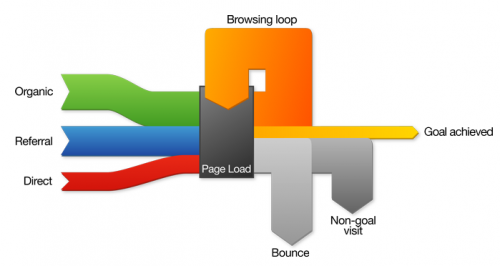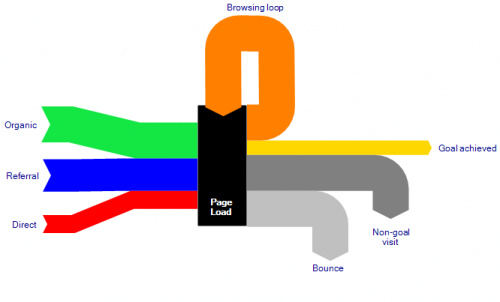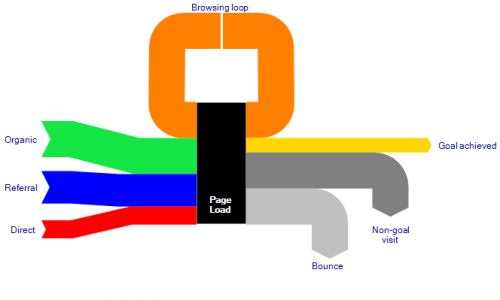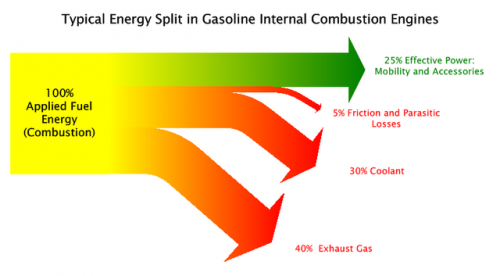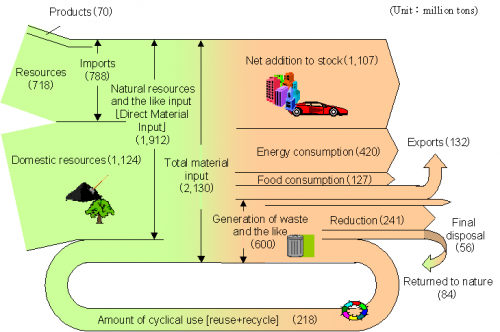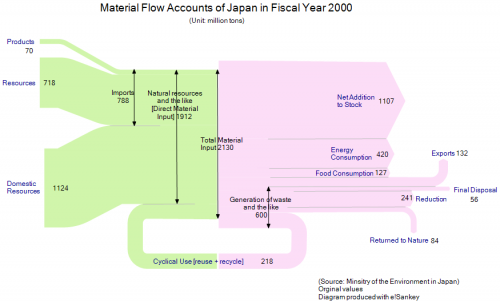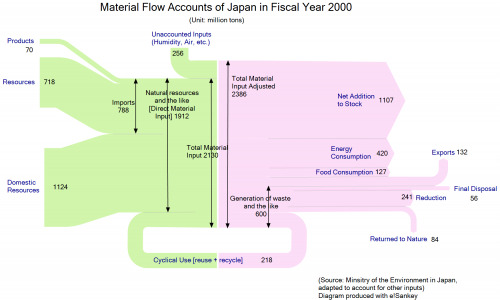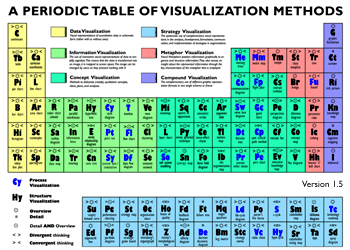This post on the Pinhead’s Progress blog makes my day (if not my whole weekend!). ptuft draws the attention to a slide presented by Wes Hermann from Stanford at the SciFoo 2007 conference. You can see the original photo on flickr and the presentation slides “Earth’s Exergy Resources – Energy Quality, Flow, and Accumulation in the Natural World” by Wes Hermann here.

While I am not yet sure if this qualifies fully as a Sankey diagram, I find it really really fascinating! The diagram is titled “Exergy flux, accumulation, destruction, and use” and shows “where all the energy on the earth comes from, where it gets stored, and where it goes”. It distinguishes by colors the following exergy resources: Thermal, Nuclear, Radiation, Gravitational, Kinetic, Chemical.
The diagram type could be called a hybrid Sankey-Grassmann diagrams (see this post). The upper part is where radiation exergy is shown: 162000 TW of solar radiation and another 62500 TW of extra-solar radiation arriving on planet earth, being lost through atmospheric absorption, evaporation and surface heating. The green part (Chemical exergy) is what we focus on when we talk about energy consumption today. Hermann calls it “exergy destruction for energy services” (measured in ZJ). Accumulated exergy is shown with elliptic pouches on the arrow. Nuclear exergy features in the diagram as “bubbles”, most of it not accessible for human use as energy. One can find many other interesting details in this diagram.
I am tempted to challenge my e!Sankey tonight to see if I can draw this. Two different units (in this case TW and ZJ) can be displayed in one diagram. Biggest visualization issue will certainly be to handle the large differences in scale. Let’s see if I find the time, or if I prefer to enjoy radiation exergy of the summer sun at the poolside instead…
